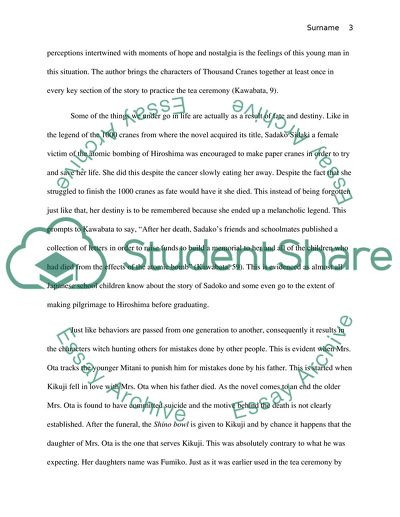Cite this document
(“Write an essay based on the book thousand cranes by yasunari kawabata”, n.d.)
Retrieved from https://studentshare.org/literature/1610682-write-an-essay-based-on-the-book-thousand-cranes-by-yasunari-kawabata
Retrieved from https://studentshare.org/literature/1610682-write-an-essay-based-on-the-book-thousand-cranes-by-yasunari-kawabata
(Write an Essay Based on the Book Thousand Cranes by Yasunari Kawabata)
https://studentshare.org/literature/1610682-write-an-essay-based-on-the-book-thousand-cranes-by-yasunari-kawabata.
https://studentshare.org/literature/1610682-write-an-essay-based-on-the-book-thousand-cranes-by-yasunari-kawabata.
“Write an Essay Based on the Book Thousand Cranes by Yasunari Kawabata”, n.d. https://studentshare.org/literature/1610682-write-an-essay-based-on-the-book-thousand-cranes-by-yasunari-kawabata.


